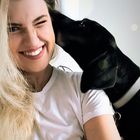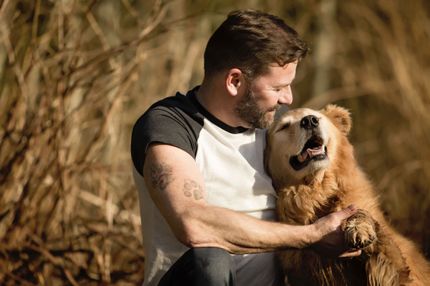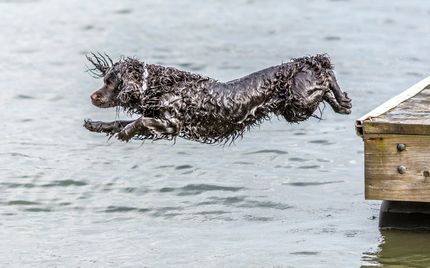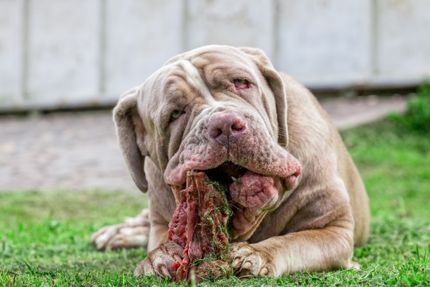Facts & Origin
Chihuahua and poodle in one
The Chi-Poo is a so-called designer or hybrid breed that is the result of crossing a Chihuahua with a poodle. In most cases, a toy poodle or miniature poodle is used for this - i.e. poodles of a small size that are physically similar to the Chihuahua.
This mix probably originated in the USA when the trend for small, low-maintenance dogs with little hair loss gained popularity. The aim was to combine the intelligent, friendly nature of the Poodle with the strong, affectionate nature of the Chihuahua - and at the same time create a dog that might be more suitable for allergy sufferers.
Criticism of the Chi-Poo
As with many designer dogs, there is also criticism of the Chi-Poo - especially from animal welfare and breeder circles. As the Chi-Poo is not an officially recognized breed, there are no uniform standards for health, appearance and temperament. As a result, Chi-Poo puppies can vary greatly within a litter - both in terms of appearance and character.
Another point of criticism concerns the breeding conditions. Some Chi-Poos come from uncontrolled or commercial matings where neither health checks nor temperament tests are carried out on the parents. This can lead to uncontrolled inheritance of health problems in both breeds.
There is also criticism that the Chi-Poo - like many hybrid breeds - is often marketed without future owners being sufficiently informed about its needs and care requirements. The cute look alone should not be the main focus.
Suitability of the Chi-Poo
If bred responsibly, the Chi-Poo can be a happy, eager to learn and affectionate companion dog. It is well suited to single people, couples or seniors, but also to small families looking for a compact and intelligent dog.
Chi-Poos are usually people-oriented, playful and adaptable. They build up a close bond with their caregivers, but can also show a certain sensitivity or nervousness - especially if they lack socialization. Due to their poodle nature, they often have a high willingness to learn, which makes training easier - but they still need clear rules and structure.
The Chi-Poo is generally well suited to living in an apartment as long as it is kept sufficiently occupied and not left alone for too long. Walks, intelligence games and training sessions promote its balance.

| Alternate Name | - |
| Origin | Mexico - Germany |
| Life expectancy | 12 - 20 years |
| Care requirements | low-maintenance - high-maintenance |
| Activity level | low - average to high |
| FCI group | not recognised |
| AKC group | not recognised |
| KC group | not recognised |
More Chihuahua mixes
More Poodle mixes
Attitude, character and temperament of the breed
Possible character traits of the Chi-Poo
The Chi-Poo is generally a lively, intelligent and affectionate little dog. It combines the clever, eager-to-learn nature of the Poodle with the self-confident, often temperamental nature of the Chihuahua - a mixture that brings with it both charm and character.
Many Chi-Poos are attentive, playful and people-oriented. They build up a close relationship with their caregivers and are often very loyal and cuddly. At the same time, they can - especially with a strong Chihuahua influence - also develop a certain vigilance and protective instinct and sometimes tend to overreact to strangers or dogs if they are not well socialized.
A certain sensitivity is also typical: the Chi-Poo often reacts sensitively to its human's mood and tone of voice, which makes it a good emotional companion - but also means that it should be led consistently and gently.
Overall, the Chi-Poo is a bright, charismatic small dog that adapts well to the life of its humans with the right training.
Character
Usage
Possible diseases of the Chi-Poo
Although mixed breeds are often considered to be more robust, inherited diseases of both parents can also occur in the Chi-Poo - especially if no preventative health measures have been taken.
Typical health problems in the Chi-Poo:
Patellar luxation (dislocation of the kneecap), particularly common in small breeds
Dental problems, for example due to misaligned teeth or premature tooth loss
Hypoglycemia (low blood sugar), especially in very small dogs at a young age
Heart problems, e.g. mitral valve disease, which can occur in Chihuahuas
Allergies or skin sensitivities, e.g. to food or environmental stimuli
In rare cases: Epilepsy or eye diseases such as cataracts
Many problems can be prevented with regular veterinary examinations, a healthy diet, exercise and good care. Responsible breeding with health-tested parents is particularly important.
This is what a Chi-Poo can look like
The appearance of the Chi-Poo varies - depending on whether the Chihuahua or the (Toy or Miniature) Poodle dominates. Most Chi-Poos are small, with a shoulder height of around 20 to 30 centimetres and a weight of between 2.5 and 6 kilograms.
The build is usually compact and graceful, with well-proportioned legs and a lively gait. The head is often roundish with medium-sized, expressive eyes and a fine muzzle. The ears can be erect, semi-erect or drooping.
The coat varies greatly: it can be smooth, wavy or curly - with a texture between the fine Chihuahua hair and the curl typical of a poodle. Many Chi-Poos shed little or not at all and are therefore considered potentially allergy-friendly, but require regular grooming or even trimming.
The coat colors are varied: from white, cream, beige, brown, black to tricolor or merle patterns - depending on genetic predisposition.
Overall, the Chi-Poo is an expressive, elegant small dog that quickly wins the hearts of its people with its charming appearance and lively personality.
| Fur length | medium |
| Fur | flat coated - curly |
| Ear shape | Standing Ears - Floppy Ear |
| Tail | lang |
| Anatomy | slim, slim, sporty |
| Size ♀ | 15 - 60 cm |
| Weight ♀ | 2 - 28 kg |
| Size ♂ | 15 - 60 cm |
| Weight ♂ | 2 - 28 kg |
| Suitable For | Children, Seniors, suitable for allergy sufferers, Beginner, Blind people, Children, Seniors |
Known Diseases
Eye diseases
Often occur with allergies and intolerances.
Hypoglycemia
If an insulin dose was overdosed or accidentally administered twice, the dog may experience hypoglycemia.
Tartar
If dogs don't get a good food or sugary food, tartar can quickly appear.
Eye infections
Chronic eye infections can be very painful in dogs and can be treated with medication. In rare cases, the cornea must be treated.
Epilepsy
Definition: Dog has epilepsy if, for example, at least two epileptic seizures occur more than 24 hours apart.
Cataract
Cataracts are still one of the most common causes of blindness, even in dogs.
Progressive Retinal Atrophy (PRA)
Progressive retinal atrophy (PRA) is a slowly progressive death of the retina in dogs.
Patellar problems
Problems with the Patellar can be a displacement or weak kneecap, which is one of the most common causes of lameness in dogs, also because of overweight.
FAQ
-
A Chi-Poo is a mixed-breed dog created by crossing a Chihuahua with a Poodle.
-
A Chihuahua-Poodle mix can look different depending on which parent breed it resembles more. As a rule, however, they have a small to medium-sized body, long legs and a soft, curly coat.
-
A Chihuahua-Poodle mix can inherit the best traits of both parents, which means that they are usually intelligent, affectionate and energetic dogs.
-
As a Chi-Poo is a small dog, it doesn't need much exercise. However, they do need daily walks and playtime to stay healthy and happy. It is also important to brush their coat regularly to avoid matting and tangles.
-
Yes, Chihuahua and Poodle mixes are generally good with children if they are properly socialized and trained.






















